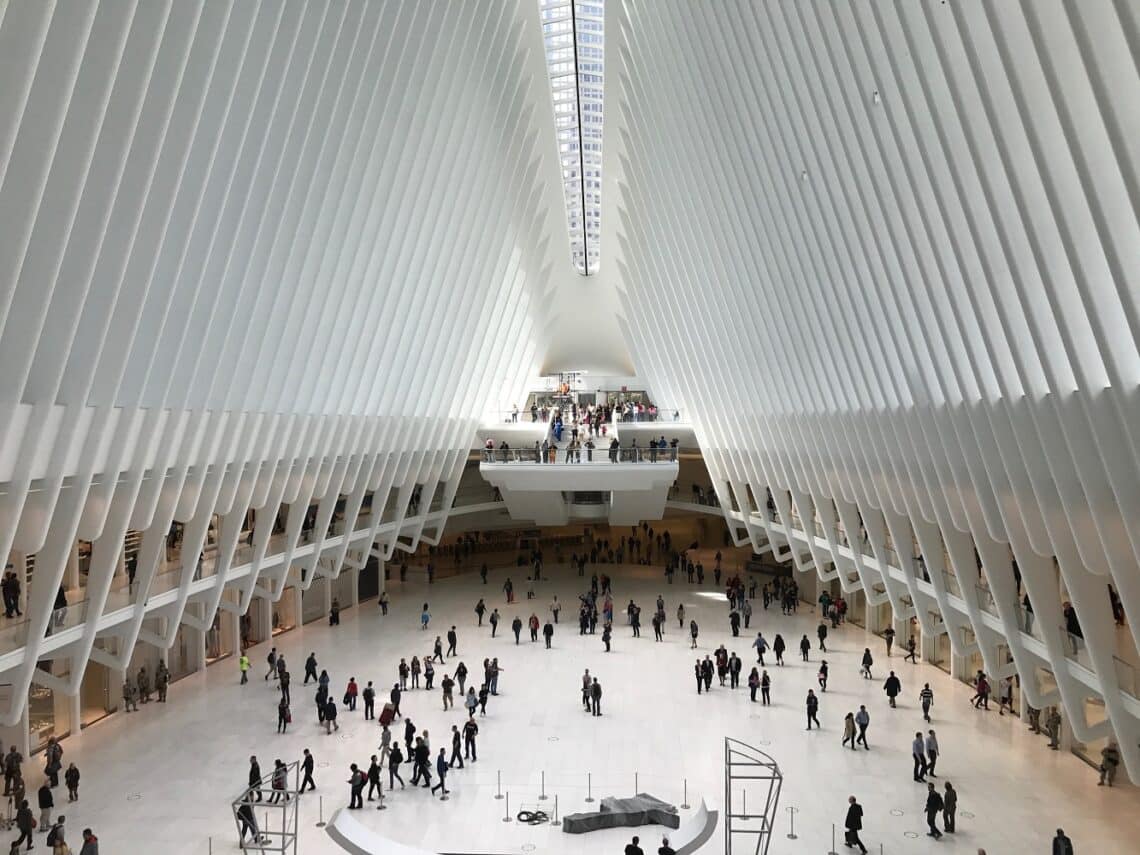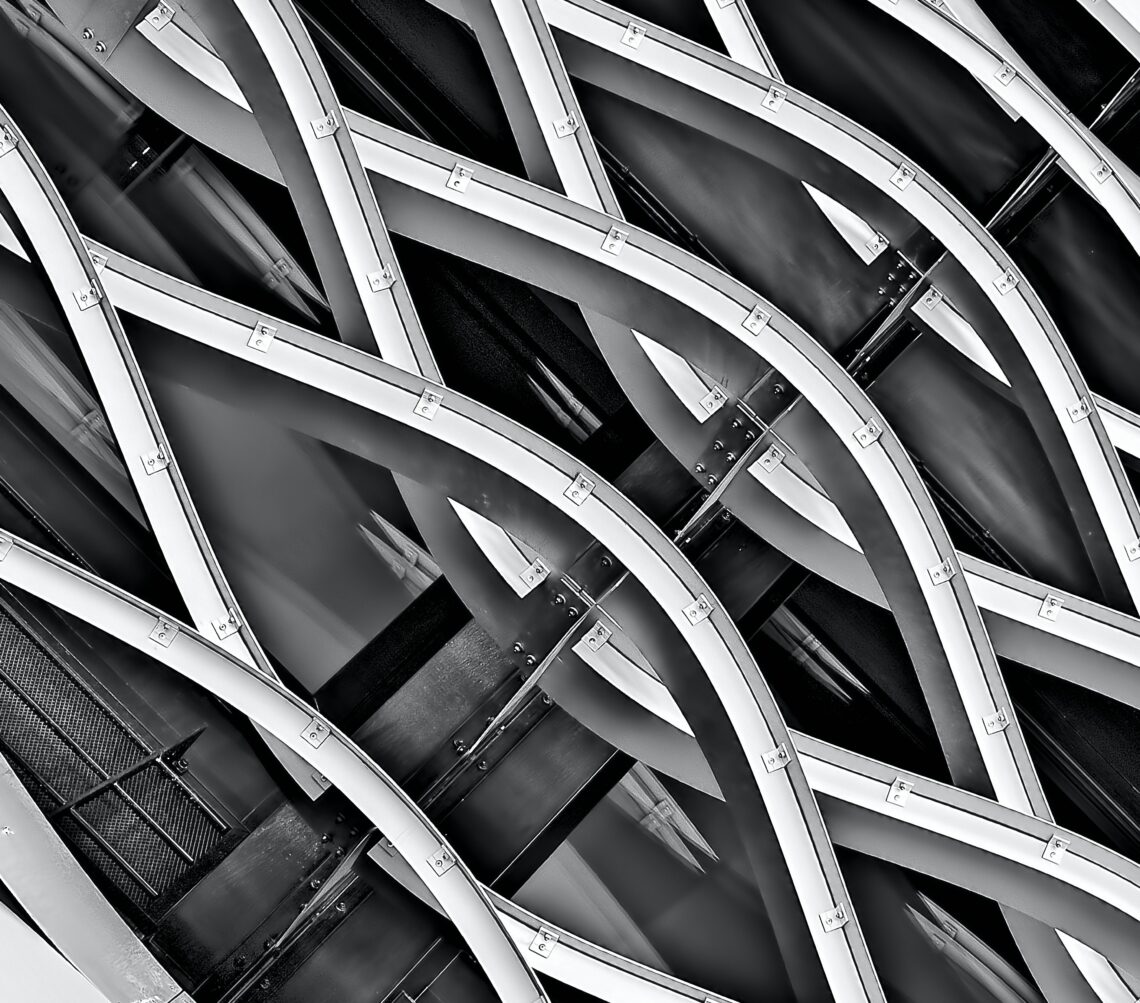Ever since the late 1800s, when the first skyscrapers were erected in Chicago, steel continues to be a primary building material.
Buildings, especially commercial projects, used cast iron. However, steel gradually replaced cast iron as the former was more structurally sound and fire-resistant. Thereafter, steel became a crucial component in the construction business.
The benefits of steel in the construction industry are undeniable and still relevant in the present day. Designers, developers, and architects worldwide agree that steel gives them the creative freedom to achieve the most ambitious and unconventional projects.
Hence, structural steel is essential, be it stadiums, shopping malls, or other commercial developments.
 Alternative Building Materials
Alternative Building Materials
So far, there are no standard alternatives to steel. However, engineered timber and metal composites are rapidly becoming popular in commercial projects.
Timber manufacturers tout wood as a hard-wearing, renewable material, and as such, engineered timber is fast gaining momentum as a steel alternative. One recent example is the arts and media building in New Zealand’s Nelson Marlborough Institute of Technology.
The company that undertook this project replaced steel and concrete with engineered wood. Since then, they have received a wave of positive responses, with more clients wanting to switch over.
Likewise, alternative metal alloys and composite substances, like Fiber Reinforced Plastics (FRP), are considered viable replacements for steel in commercial construction. That said, composites are more durable compared to steel. Besides, repairing damaged composites is neither a costly affair nor does it require any heavy machinery.
Nevertheless, the major drawback of these alternative resources is the higher cost. Since FRP and other composites are still relatively new on the block, they are more expensive to produce, hence, may not be the first choice for most builders, yet.
Residential Steel
Steel is gradually becoming popular in residential construction as well. Earlier, designers and architects picked wood over steel, especially for framing applications. However, with wood framing, durability was an issue, so many professionals started using steel instead.
But we cannot ignore the expense and energy involved when using steel for residential construction. While the number of takers may have increased, very few contractors opt for steel framing while building homes.
To draw a contrast, the U.S. Department of Housing conducted a study in 2002 where they built two homes–one with steel framing and the other with wood. The aim was to compare the costs of building the two houses.
The results indicated that the home with steel framing cost about 14% more to build than its wood counterpart and also needed more time to complete.
Nevertheless, steel has a considerably higher strength to weight ratio as opposed to wood. Long story short, steel components are sturdier without adding more weight. This characteristic makes steel structures stronger than wooden ones, and more practical in areas that have a history of tornadoes, earthquakes, and other natural calamities.
Furthermore, steel is leagues ahead of wood as it’s also fire and termite-resistant.
Pros and Cons of Steel
Pros
- Design Freedom
Architects love working with steel as it offers more design freedom in terms of texture, shape, and color. Its characteristic durability, strength, malleability, and precision allow designers to work with broader parameters while exploring different ideas and coming up with modern solutions.
Also, steel enables builders to create large open spaces, without the interference of columns or supporting walls. It’s highly multi-purpose since it can bend in different angles, forming segmented curves or abstract combinations for facades, domes, and arches. Therefore, with steel, there’s no end to experimenting and customizing.
- Highly Efficient
Steel is high on efficiency in the sense that it’s fast and easy to assemble in all seasons. Since the parts are manufactured off-site, there’s a minimal requirement of on-site labor.
For instance, a full-size frame can be built in a few days, reducing on-site construction time by 20% to 40%. The time saved makes a huge difference, especially in the case of large-scale projects.
Also, steel is advantageous on more challenging terrain as it enables fewer points of contact with the ground, thus minimizing the excavation required.

- Eco-Friendly
Some green initiative builders prefer using steel to create eco-friendly construction projects. Unlike other materials, steel is a far more durable and efficient renewable source. Therefore, for green building projects, steel is used in combination with other eco-friendly substances.
- Low Wastage
Unlike other recyclable materials, steel does not lose quality or strength whenever it’s remodeled or repurposed. Furthermore, since you can weld smaller misshaped parts for ancillary jobs, there’s very low waste in steel construction compared to wood.
In fact, steel significantly cuts down the use of non-renewable resources as nearly 30% of new steel is manufactured from recycled steel.
- Fire Resistance
Over time, structural steelwork has undergone extensive evaluation to provide essential feedback about steel’s response to fire. With the formulation of modern design and analysis techniques, builders can now provide accurate information on fire protection requirements for steel-framed buildings.
It has been found that in the case of such structures, there have been significant relaxations in the amount of fire safety required.
- Earthquake Resistance
Earthquakes are still highly unpredictable in terms of frequency, magnitude, location, and duration. Therefore, steel becomes a viable building material option for earthquake safety as it’s naturally ductile and flexible. Instead of crumbling and crushing, it flexes when subjected to extreme loads.
More often than not, beam-to-column joints in a steel-framed building are purposefully designed to support gravity loads. Besides, these structures have considerable strength to withstand lateral loads generated by earthquakes and winds.
Cons
- Corrosive
All is good with steel until you have to deal with its corrosive nature. If you’re using steel in humid locations, coastal areas, or even in places like bathrooms or kitchens, it will corrode sooner or later.
In this case, we recommend using generous coatings of anti-corrosives to protect the surfaces.
- Poor Insulation
Another issue with steel is that it perfectly conducts heat and cold. From an insulation standpoint, that’s far from ideal. Therefore, to make your building energy-efficient, you’ll need additional insulation, which will counteract the conductive nature of steel.
Despite its drawbacks, steel continues to be the top choice for framing commercial buildings and making its way into residential construction.
 Use of Steel In Different Buildings
Use of Steel In Different Buildings
- Agricultural Barns and Farms
Steel building designs are quite popular in the agriculture industry, especially for constructing barns or outstations. Since steel is rugged and long-lasting, it works well for the purpose of commercial agricultural farms.
Besides, steel structures are easier to repair even if they suffer damages that are caused by cattle or heavy machinery. That said, steel buildings are ideal for stocking crops and providing safe housing to farm animals.
Additionally, these establishments serve as workshops and maintenance units and even provide office space for employees.
- Warehouses And Factories
Since steel holdings can be designed to house a large area, without being broken apart, they are suitable for warehouses and factories.
Whether you’re storing goods or keeping production machinery, a steel building will allow you to have separate entry and exits for workers’ entry and loading. This helps in organizing and streamlining day to day business. Furthermore, the establishment can be insulated, air-conditioned, or heater as per requirements.
Plus, they offer large open spaces for tasks in different production stages and have provision for smaller rooms that can be used as offices and break rooms.
- Government And Public Buildings
You may be surprised to learn that steel is also a popular choice for government and public establishments. Buildings made of steel can extend over wide, open spaces without any supporting structures or columns. Likewise, the area can be segmented into smaller enclosures to set up separate departments.
Other than budget pricing, which is often a prerequisite for local government buildings and community centers, steel allows architects to design buildings based on specific needs..
Common Types Of Steel Used in Buildings
- Carbon Steel Or Mild Steel
Carbon steel contains about 0.12% to 2.0% carbon and is the most common type of steel used in construction. In this case, carbon is incorporated as a hardening agent. That said, the higher the level of carbon, the stronger the steel becomes through heat treatment.
Mild steel is a popular choice mainly because of its low price and versatility across multiple applications.
- Rebar Steel
Rebar steel is also commonly known as reinforcing steel. It is typically used as a tensioning appliance to strengthen concrete and other masonry structures. This is an excellent choice for making establishments structurally sound as it includes ridges that firmly ‘grip’ on to the concrete.
- Structural Steel
Structural steel is mainly used in smaller applications that are critical to the overall design of a project. They come in a variety of shapes, including I-Beam, HSS shape, L shape, C-beam, T shaped, bar, rod, plate, etc.
Different Types Of Structural Steel Shape
The application of structural steel heavily depends on its shape. While designers often instruct welders to create components that enhance overall durability, there are few common shapes with their own set of applications.
- Custom Shapes
Architects today want to experiment with different designs and shapes to bring their blueprint to reality. They don’t want to restrict their ideas to common steelwork and indulge owners with awe-inspiring structures that stand out. Therefore, custom shapes are very much in vogue for both commercial buildings and residential establishments.
- Tee (T-Shaped)
The tee beam (or T-beam) is generally used as a load-bearing beam. The T-shaped cross-section enables these structures to support heavy loads without buckling.
- Bearing Pile (H-Shaped)
Engineers and construction professionals are always on the lookout for durable parts that can provide the best solution. That’s where these H-shaped components come into picture. These are used to create deep foundation systems that are essential for certain establishments.
Long story short, builders employ bearing piles in dense soils and projects that require a weight of 1,000 tons to be handled at a time.
- Channel (C-Shaped)
Channel beams (aka C-beams) are engineered with top and bottom flanges that give them the typical C shape. That said, C-beams are most commonly used in building bridges.
However, of late, C-beams are also utilized in other building applications, including, but not limited to, marine piers.
- Angle (L-Shaped)
Angle beams are mainly used in floor systems and building foundations. Their L-shape makes them a popular choice as they provide more stability and support to the floor structure, while minimizing structural depth.
- Pipe
The structural steel pipes are among the essential components used in construction work. Usually, these pipes are put to use in oil, gas, and water projects. Since these steel parts are nothing but hollow, cylindrical tubes, they are, in some cases, better than water pipes. Therefore, many times, designers replace regular water pipes with these structures.
- I-Beam
I-Beams are also known as H-Beams as they feature horizontal flanges on either side. So, they look more like 3D versions of the letter ‘H’. The rims, along with the vertical part, enable flexibility for more precise application.
These are generally used as support trusses, and often in the main framework of buildings.
- Hollow Steel Section (HSS)
HSSs are metal components that are available in various shapes and sizes. HSS beams can be circular, square, rectangular, or elliptical.
The multiple shape options enable builders and designers to use HSS beams for projects with loading requirements in different directions.

How Steel Is Used In Buildings And Infrastructure
Steel, as such, is a versatile building material, and the possibility of using it in buildings and infrastructure are endless.
Listed below are some of the most common applications.
Steel For Buildings
- Structural Sections
These parts provide a sturdy and stiff frame for buildings. This application alone makes up 25% of steel used in buildings.
- Sheet Products
An estimated 31% of the steel used in buildings is for the purpose of engineering sheet products like roofing, internal wall, purlins, cladding, ceilings, and insulator panels for exterior walls.
- Reinforcing Bars
Reinforcing bars add tensile strength and firmness to concrete and make up for the remaining 44% of the steel used in buildings. Steel and concrete bind perfectly and have a similar thermal expansion coefficient.
The combination of the two substances results in strong yet relatively cost-effective material. Besides, reinforced concrete is used to design deep foundations and basements, and, presently, it’s a primary building material worldwide.
- Non-Structural Steel
Steel is present in several non-structural applications, such as heating and cooling appliances and interior ducting. Furthermore, Internal fittings and fixtures like shelving, rails, and stairs are also made of steel.
For Infrastructure
- Transport Networks
Steel is necessary for constructing bridges, rail tracks, tunnels, and erecting buildings, such as train stations, fueling stations, airports, and ports. Nearly 60% of the steel used in building transport facilities is in the form of rebar, while the remaining constitute plates, sections, and rail tracks.
- Utilities (Fuel, Power, and Water)
More than 50% of the steel employed in such applications is used for underground pipelines to distribute water and gas to households. The rest is primarily rebar for pumping houses and power stations.

Final Words
There’s no doubt that steel is the backbone of the construction industry, but we cannot look away from the fact that steel company stock prices are dropping. So, it’s understandable why buyers, designers, and builders are casting their doubts regarding the viability of steel in new projects.
Like every other industry, the steel industry underwent severe turmoil as a direct outcome of the recent economic downturn. American steel companies like Butler Manufacturing had to resort to layoffs due to slowdown in business.
While steel producers are trying to brave the economic challenges, a dip in the number of projects continues to be an issue. This invariably means fewer production jobs, even though commercial buildings made of steel are more common than before.
Moreover, steel is also getting costlier as production expenses and the price of raw materials (iron and coal) are on the rise. Therefore, the steel industry’s fate depends on several factors that contribute to its overall growth and expansion.
While it’s true that other alternatives are foraying into the market, steel can regain its old glory as and when the economic situation improves.


